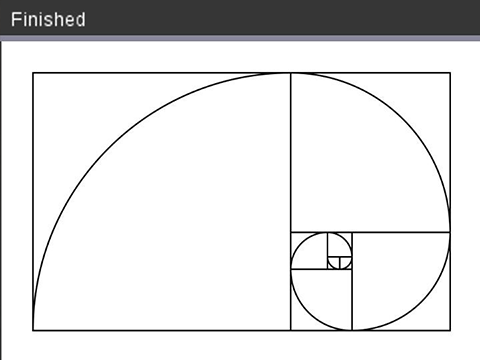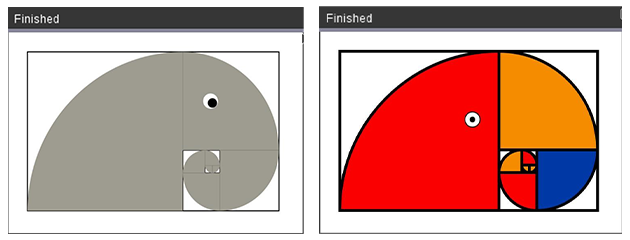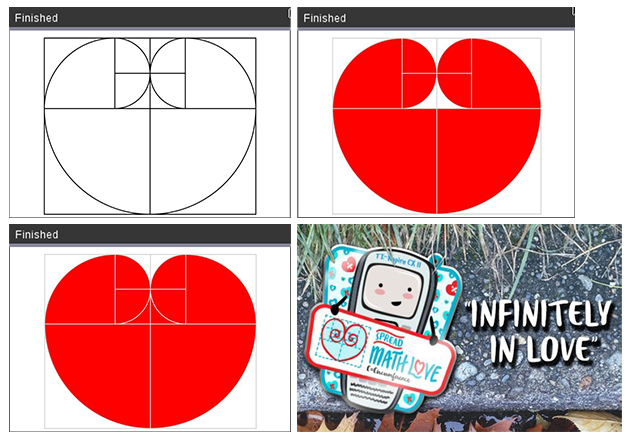Finding Fibonacci (Fibo) — 6 Examples That May Just Blow Your Mind!
We are constantly looking for things, whether it be our car keys, ourselves or the next best smartphone. Sometimes, finding things become pop hits. Back in 1985 there was a video game that was popular called “Where in the World Is Carmen Sandiego?” Not too long after the debut of that game came a low-tech “looking/finding” activity book called “Where’s Waldo?” (1987). We had to wait over 16 years before we went looking for a clown fish in “Finding Nemo.” Then, 16 years after that, we went “Finding Dory.” Now, I am not one to question things too critically, but why is it that animated fish get lost so easily? We can save that for another blog post.
Because I am a math guy, and with all of this “looking,” I thought that perhaps we should do a little “Finding Fibo!” Yup, Fibonacci — that Fibo is quite sneaky! Technically, he is pretty easy to find.
He is buried in Pisa, Italy, with a statue of him marking his grave. A little fact about Fibonacci is that his name wasn’t Fibonacci. He was born Leonardo Pisano. Pisano was posthumously given the nickname Fibonacci (derived from filius Bonacci, meaning son of Bonaccio). Now that we have that possible bit of mathematical trivia out of the way, let’s get on with our “Finding Fibo!” You may be pretty surprised where else he lurks.

What is the Fibonacci sequence?
Most math types are familiar with “the sequence.” And if you ask someone walking down the street if they know of the Fibonacci sequence, they might say that they have heard of it or him but aren’t quite sure. Once they are presented with the beginning of the sequence 1, 1, 2, 3, 5, 8, 13, 21 … they usually will determine the pattern. People have been seeing the Fibonacci sequence/numbers forever, and with a quick internet search you can be in awe of what has been found. The rings on a sunflower or a pineapple are two that come to mind. Let’s look at a few examples:
1. The squares
Using “the sequence,” you can create a visual of it using the sequence value to represent the length of an edge of a square. They can be creatively arranged in such a manner as to create this image. Recognize this? “Finding Fibo!”

2. What about the curve/spiral?
The familiar Fibonacci spiral can be drawn by connecting successive quarter circles or arcs, known as the golden ratio, which is the ratio of a term divided by its previous term. Its value is 1.6180339887 ... and symbolized by the Greek letter phi (Φ) pronounced fee (or some say it phi, rhyming with fly). The value is an irrational number, which would be a great addition to other well-known irrational numbers such as π and ⅇ.
So, with this irrational number Φ, and its relationship to Fibonacci, I dare say that we could refer to him now as Φbonacci. Or possibly just Φ, and he could have been the inspiration for Prince changing his name to  . Who knows, Φ could have represented the mathematician formerly known as Fibonacci! “Finding Fibo!”
. Who knows, Φ could have represented the mathematician formerly known as Fibonacci! “Finding Fibo!”

3. Now, the art!
This spiral is wonderful, and it becomes more fun when you unleash students’ creative artistic abilities. Two images that I found were the Fibonacci elephant and the Fibonacci parrot. Makes you think that these are the first of many Fibo-mojis! (I do love emojis. Check out a previous blog I wrote on this topic.) “Finding Fibo!”… even in art!

4. The number play
People are always looking for number patterns and finding them in other numbers. So, if the following ratio 100/9899 = .01010203050813210000 … it is converted into a decimal and the result contains the first eight digits in the Fibonacci sequence. Yep, “Finding Fibo!” again!
5. We <3 Fibonacci!
To show your love of math and Fibonacci, you and your students can create a Fibonacci heart by reflecting one of the curves and filling in the arcs. Check out the activity and programming behind it. Little did I know that Texas Instruments was way ahead of me. Just the other day I saw that they had created their “Spread Math Love” stickers! “Finding Fibo!”

6. Where’s Fibo?
Finally, it is little known that Fibonacci, after a hard week of work, would love to go to the beach and dip his toes in the Mediterranean. However, the beaches were always very popular, and it was often very difficult to find him. But if you knew a little about him, it was not very hard to put your beach blanket down next to him. All you need to do is know exactly where to look. “Finding Fibo!”

|

|
Many of the images were created with the TI-Nspire™ CX II graphing calculator, programing in Python and using the ti_draw feature. It can be a great way for students to combine learning about Fibonacci and exploring some computer programing. To learn more about the ti_draw feature in Python, visit TI Codes. Encourage your students to continue this “Finding Fibo” game, and they just may actually blow your mind on what they discover and share.
Happy Fibonacci Day!
About the author: Brad Posnanski (@POSitive_MATH) teaches algebra I, precalculus, Introduction to STEM and AP® Computer Science Principles at Comsewogue High School on Long Island in New York. He has been teaching for 26 years and also coaches varsity track and field. He is a national T³™ instructor presenting regularly at Texas Instruments international conferences, several Tuesday night national TI webinars, and local state teacher conferences. He is a firm believer in the integration of technology in the teaching of mathematical concepts to make learning more fun and interesting.
Tagcloud
Archive
- 2025
- 2024
- 2023
- 2022
-
2021
- January (2)
- February (3)
- March (5)
-
April (7)
- Top Tips for Tackling the SAT® with the TI-84 Plus CE
- Monday Night Calculus With Steve Kokoska and Tom Dick
- Which TI Calculator for the SAT® and Why?
- Top Tips From a Math Teacher for Taking the Online AP® Exam
- Celebrate National Robotics Week With Supervised Teardowns
- How To Use the TI-84 Plus Family of Graphing Calculators To Succeed on the ACT®
- AP® Statistics: 6 Math Functions You Must Know for the TI-84 Plus
- May (1)
- June (3)
- July (2)
- August (5)
- September (2)
-
October (4)
- Transformation Graphing — the Families of Functions Modular Video Series to the Rescue!
- Top 3 Halloween-Themed Classroom Activities
- In Honor of National Chemistry Week, 5 “Organic” Ways to Incorporate TI Technology Into Chemistry Class
- 5 Spook-tacular Ways to Bring the Halloween “Spirits” Into Your Classroom
- November (4)
- December (1)
-
2020
- January (2)
- February (1)
- March (3)
- April (1)
- May (2)
- July (1)
- August (2)
- September (3)
-
October (7)
- Tips for Teachers in the time of COVID-19
- Top 10 Features of TI-84 Plus for Taking the ACT®
- TI Codes Contest Winners Revealed
- Best of Chemistry Activities for the Fall Semester
- Best of Biology Activities for the Fall Semester
- Best of Physics Activities for the Fall Semester
- Best of Middle Grades Science Activities
- November (1)
- December (2)
- 2019
-
2018
- January (1)
- February (5)
- March (4)
- April (5)
- May (4)
- June (4)
- July (4)
- August (4)
- September (5)
-
October (9)
- Art in Chemistry
- Which Texas Instruments (TI) Calculator for the ACT® and Why?
- Meet TI Teacher of the Month: Jessica Kohout
- Innovation in Biology
- Learning With Your Students
- A first-of-its-kind STEM strategy charts path to help educators
- #NCTMregionals Hartford 2018 Recap
- The Math Behind “Going Viral”
- Real-World Applications of Chemistry
-
November (8)
- Testing Tips: Using Calculators on Class Assessments
- Girls in STEM: A Personal Perspective
- 5 Teachers You Should Be Following on Instagram Right Now
- Meet TI Teacher of the Month: Katie England
- End-of-Marking Period Feedback Is a Two-Way Street
- #NCTMregionals Kansas City 2018 Recap
- Slope: It Shouldn’t Just Be a Formula
- Hit a high note exploring the math behind music
- December (5)
- 2017
- 2016
- 2015
